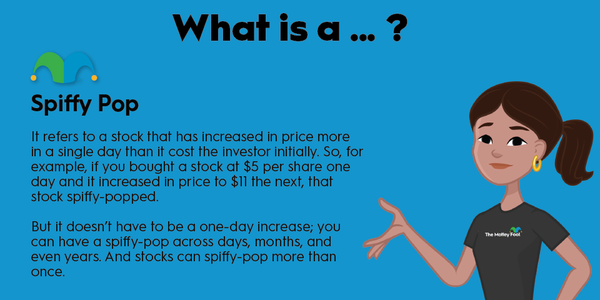Publicly traded companies are never standing still. They're always looking for new ways to grow, whether that's through new product categories, new geographies, or even an acquisition.
However, major corporations also make other moves to create shareholder value, including divesting themselves from subsidiaries or secondary brands or even spinning them off into a separate company, which is sometimes known as a stock spinoff.

What is a stock spinoff?
What is a stock spinoff?
In a stock spinoff, one company splits into two or more companies. Companies do this in order to create shareholder value, and they often make this decision when management believes that the stock price does not reflect the underlying value of the business.
Stock spinoffs happen for a variety of reasons. Sometimes, a company has two or more brands or subsidiaries that it believes are no longer aligned. In other spinoffs, management might think that each business can be better understood as separate entities by investors rather than as one conglomerate.
How does it work?
How does a stock spinoff work?
Generally, the first step in a stock spinoff is for management to issue a press release or an announcement informing investors of the plans to spin off part of the company.
Assuming the investor response is favorable, the company then proceeds with the work of creating the new company. They must come up with a name, hire a management team, and decide on an organizational structure. They'll also need to explain to customers how they will serve them during the transition and will likely need to find a new headquarters and office space.
Once the new company has begun to take shape, the existing company will file a Form 10 with the Securities and Exchange Commission, registering new securities for the new company and explaining the business and financials, much in the way that an S-1 does for a company listing through an initial public offering.
From there, the company will announce a spin date or the day the spinoff will be executed, and on that day, the new company will begin trading. Investors who hold stock in the original company will see a portion of their holdings convert into shares of the new stock, and the market cap of the existing company will adjust according to how the market values the new companies.
Stock
Benefits and risks
What are the benefits and risks of stock spinoffs?
The most common reason for stock spinoffs is to create shareholder value.
Spinoffs are typically done by conglomerates whose businesses have grown too complicated to be adequately understood and valued by the market. Some of the companies that have recently executed spinoffs or are expected to do so include Johnson & Johnson (JNJ -0.46%), General Electric (GE 0.68%), IBM (IBM -1.05%), and 3M (MMM 0.46%).
Spinoffs tend to be more common in stocks that have struggled. Sometimes, an activist investor could push management to spin off some parts of its business as well.
In general, spinoffs can create value by streamlining each business and ensuring that their respective stock prices reflect the value of each company. This allows each business to use the stock to compensate their employees accordingly and to raise debt and use equity to fund any acquisitions they choose to pursue. It also makes it easier for investors to understand the business and for management to pitch to investors.
Typically, a spinoff is judged to be a success or failure depending on the performance of the respective stocks following the spinoffs.
Some of the risks in a spinoff include challenges in finding a new management team, a lack of investor appetite for the new company, or that the old company and the new company both underperform the market.
A spinoff alone isn't a silver bullet for creating shareholder value. Both companies need to demonstrate growth and profitability and make a compelling case for the stocks once they are separated.
Related investing topics
Example
What's an example of a stock spinoff?
One example of a spinoff was when XPO (XPO -6.22%) separated from or spun off GXO Logistics (GXO -0.06%). At the time, XPO CEO Brad Jacobs argued that the XPO was undervalued because of a "conglomerate discount," meaning Wall Street wasn't properly valuing the company because it did not have any peers and the business had become too complicated.
At the time, XPO included a less-than-truckload (LTL) transportation division, a contract logistics division or a warehouse operator, and a truck brokerage. It spun off GXO in a 1:1 spinoff, meaning that XPO shareholders received one GXO share for every share of XPO that they owned.
After GXO Logistics stock surged following the spinoff, XPO then spun off RXO (RXO -2.32%), the company that formerly made up its truck brokerage division.
While both GXO and XPO struggled through 2022, they have rebounded this year.
Unlike some other market events, stock spinoffs don't tend to be cyclical, meaning their occurrences aren't necessarily correlated with a bull market or a bear market. More often, they are a function of a conglomerate underperforming the broader stock market or management's own expectations.
3M, for example, is on track to spin off its healthcare division, and some investors are hopeful that Disney (DIS -0.04%) will spin off its legacy media units, allowing investors to decide between that declining business and its growth business in streaming and theme parks.
While it's impossible to predict future spinoffs, we do know that they will continue to take place as the tactic is one of the many tools management teams have to add shareholder value and shake up struggling businesses.





































































































